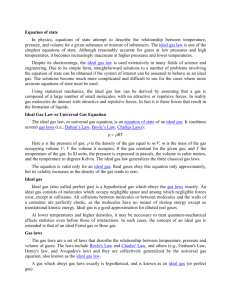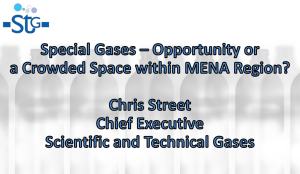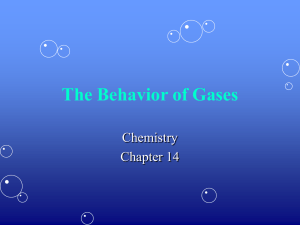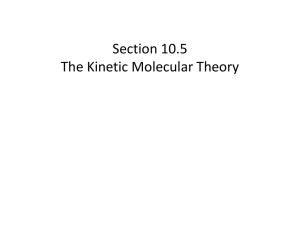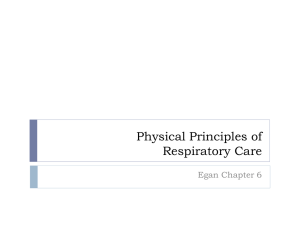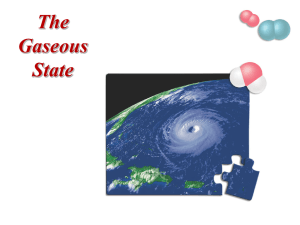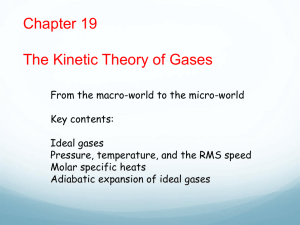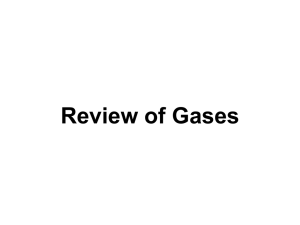Gas Laws
advertisement
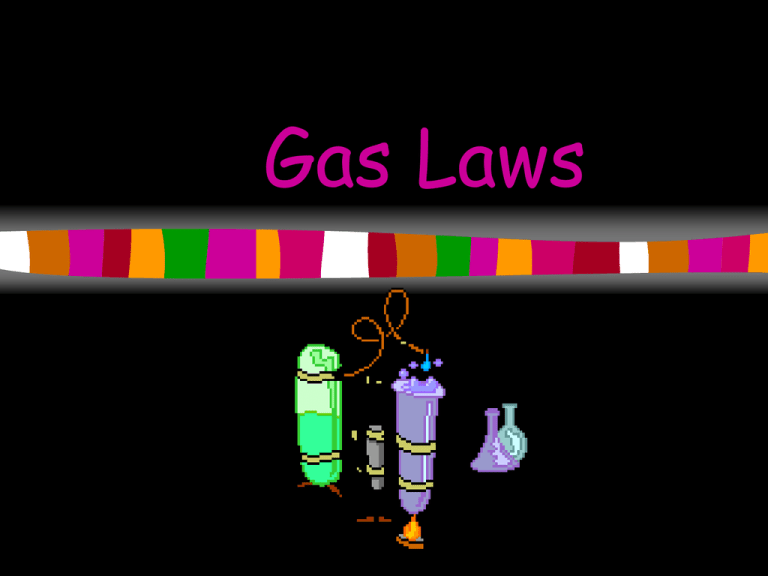
Gas Laws Molecules In The Air How do we know there are molecules in the air? Has anyone ever had wind burn? How about smelled a hamburger when you drove by McDonalds? These examples demonstrate that air is made up of constantly moving molecules. Kinetic Molecular Theory Kinetic energy is perfectly maintained in “elastic” molecular collisions. Molecules are in constant Motion. – Vibrational motion. – Translational motion. Tiny particles called “molecules” make up all matter. Kinetic Molecular Theory Describes only “Ideal Gases” – Ideal gases follow the gas laws in all conditions of pressure and temperature. Ideal gases assume particles of gas have no volume or intermolecular attraction. Ideal gases have perfectly elastic molecular collisions. In REALITY! Real gases have volume. Real gases have some intermolecular attraction. Real gases can be liquefied and solidified by cooling and applying pressure. In reality, experimentation shows us that real gases do not follow “Ideal Behavior” Gases Are All Around Us! Many gases are invisible, but some we can see. Iodine Vapor is Pink. Chlorine Gas is Yellow-Green. Smoke, clouds, and fog are NOT gases!! Gases Are All Around Us! Some gases we can smell. Hydrogen Sulfide smells like rotten eggs. In natural gas, a smell has been added for our protection. Other gases we can’t smell at all. Gases Are All Around Us! Gases have mass. Balloons that are filled with air weigh more than those that are unfilled. When air moves it can do work. For example tornadoes or windmills. Gases Are All Around Us! Gases occupy space, or have volume. Examples: – Inflated Balloon – Our Lungs – Scuba Tanks Gas Behaviors Compressibility – The volume of a gas can be decreased by increasing the pressure. Permeability – The mixing of molecules in a container. Diffusion – The ability to spread from a high concentration to a lower concentration. Expansibility – The ability of a gas to expand and fill a container of any size. Under Pressure What causes pressure? Pressure is caused by the collision of gas molecules. The molecules can collide with each other or with the walls of their container. Atmospheric Pressure Air exerts pressure on earth. – Gravity holds air molecules in the earth’s atmosphere. Atmospheric Pressure occurs when those air molecules collide with each other or other objects. Atmospheric pressure decreases as you move to a higher elevation. Gas Laws There are several different gas law equations. Variables: – – – – – – – V P T n R d Variables V= volume in liters. T= temp in Kelvins. P= pressure in atm, mmHg, or kPa. n= number of moles of gas. R= the universal gas constant. d= gas density in g/L. = molar mass of a gas in g/mol. Units of Pressure Pressure is defined as a force over a specific area. – P=F/A English system: – lbs/in2 = PSI Metric system: – N/M2=Pascal Boyle’s Law Robert Boyle (1627-1691) At a constant temperature, volume and pressure of a gas are inversely proportional. Boyle’s Law As pressure increases, volume decreases, and vice versa. V1P1=V2P2 V œ 1/P Remember the volume of a gas can NOT be squeezed down to zero! Charles’s Law Jacques Charles (1746-1823) At constant pressure, the volume of a gas and temperature are directly proportional. Charles’s Law As temperature increases, volume increase, and vice versa. V1/T1=V2/T2 VœT Gases expand as they get warm , and contract as they cool. Gay-Lussac’s Law Joseph Gay-Lussac (1778-1850) At constant volume, gas temperature and pressure are directly proportional. Gay-Lussac’s Law As temperature increases, pressure increases, and vice versa. P1/T1=P2/T2 TœP This is why aerosol cans say “Do not incinerate!” Combined Gas To simplify life, Boyle’s Law, Charles’s Law and Gay-Lussac’s Law have been put together into one mathematical expression. Combined Gas Law V1P1 = V2 P2 T1 T2
